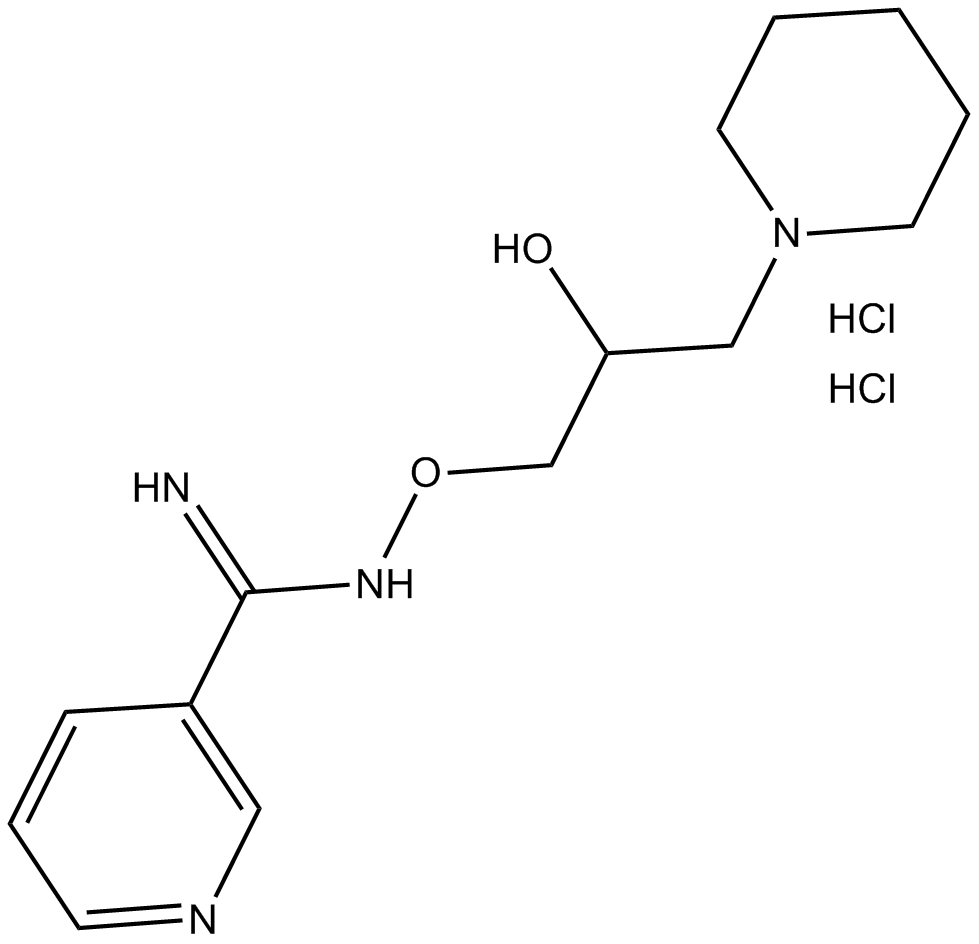BGP-15 |
| Catalog No.GC14380 |
PARP inhibitor
Products are for research use only. Not for human use. We do not sell to patients.

Cas No.: 66611-37-8
Sample solution is provided at 25 µL, 10mM.
Ki= 57 μM
BGP-15 is a PARP inhibitor.
As a group of pharmacological inhibitors of the enzyme poly ADP ribose polymerase(PARP), PARP inhibitors are considered a potential treatment for stroke and myocardial infarction.
In vitro: Previous study showed that BGP-15 at 200 μM could prevent the imatinib-induced oxidative damages, attenuate the depletion of high-energy phosphates, alter the signaling effect of imatinib by preventing p38 MAP kinase and JNK activation, and also induce the Akt and GSK-3β phosphorylation [1].
In vivo: In-vivo study indicated that BGP-15 improved cardiac function and reduced arrhythmic episodes in two HF and AF mouse models. In these models, BGP-15 was associated with increased phosphorylation of IGF1R. Moreover, cardiac-specific IGF1R transgenic overexpression in mice recapitulated the protection caused by BGP-15. The authors further demonstrated that BGP-15 with IGF1R could provide protection independent of phosphoinositide 3-kinase-Akt and heat-shock protein 70 [2].
Clinical trial: A safety and efficacy of BGP-15 in patients with type 2 diabetes mellitus has been scheduled, however, this study is now terminated due to the funding support withdrawn. (https://clinicaltrials.gov/ct2/show/NCT01069965 term=BGP-15&rank=1)
References:
[1] Sarszegi Z,Bognar E,Gaszner B,Kónyi A,Gallyas F Jr,Sumegi B,Berente Z. BGP-15, a PARP-inhibitor, prevents imatinib-induced cardiotoxicity by activating Akt and suppressing JNK and p38 MAP kinases. Mol Cell Biochem.2012 Jun;365(1-2):129-37.
[2] Sapra G,Tham YK,Cemerlang N,et al. The small-molecule BGP-15 protects against heart failure and atrial fibrillation in mice. Nat Commun.2014 Dec 9;5:5705.
Average Rating: 5 (Based on Reviews and 19 reference(s) in Google Scholar.)
GLPBIO products are for RESEARCH USE ONLY. Please make sure your review or question is research based.
Required fields are marked with *




















